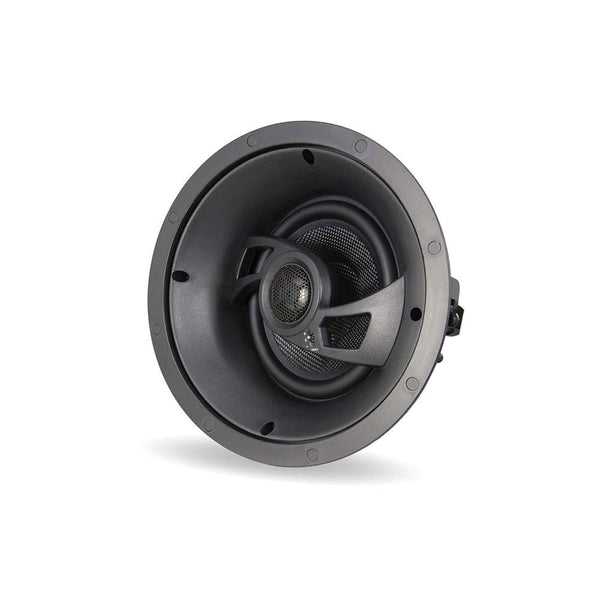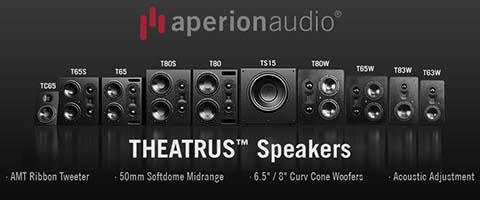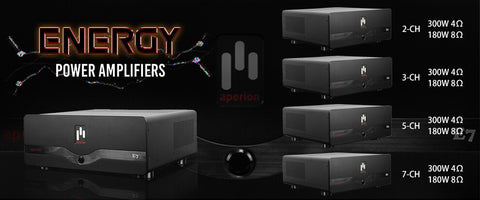- - - - - - - - - - - - - - - - - - - - - - - - - - - - - - - - - - - - - - - - - - - - - - - - - - - - - - - - - - - - - - - -

Have you noticed those attractive speakers mounted in a wall or ceiling and admired the way they visually disappear in a room? Are you looking to add distributed audio throughout your house? In-Wall and In-Ceiling speakers may be the right choice.
The following questions paired with our advice will help you decide what you should look for, and if these “architectural speakers” are the right choice.
- - - - - - - - - - - - - - - - - - - - - - - - - - - - - - - - - - - - - - - - - - - - - - - - - - - - - - - - - - - - - - - -
Are in-wall or in-ceiling speakers right for you?
Architectural speakers can look and sound great, but there are still a few situations where they are simply the wrong choice. Please ask yourself the following questions to see if they’re right for you.
- Will I be moving my speakers around? If you’ll want to move your speakers around, you should always select traditional speakers. Since architectural speakers become part of the room, they will be sold with the house — so if you are renting, planning to move, or tend to drag your speakers into the garage while you work on your car, traditional speakers may be a better choice.
- Do I have the time, skills or budget to install them in my house? Installing the speakers themselves is generally pretty easy, but running wires to the speakers can be tough. If you’re not sure what you’re getting into, you will want to read an installation manual. If this task seems too daunting, there are probably professional installers in your area that can install your speakers for a fee. If all this sounds like a huge rigmarole to you, stick with traditional speakers.
- Am I okay with great sound instead of exceptional sound? If you’re looking for loud speakers with great bass and audiophile-quality sound, traditional speakers are a better choice. If you’re determined to take “The In Wall Challenge” and see how close you can get to this kind of performance with in wall speakers, you will need to use them with a subwoofer. A speaker’s bass performance is affected by its enclosure, which in this case is the wall. Walls and speaker enclosures couldn’t be more different – speaker boxes are built to contain sound, and your walls are designed to contain you, your kids, and all your stuff. Walls also enclose an unpredictable air volume, which means the speaker can’t be tuned for its enclosure. So if you want bass as serious as the bank, a standalone subwoofer is essential.
- - - - - - - - - - - - - - - - - - - - - - - - - - - - - - - - - - - - - - - - - - - - - - - - - - - - - - - - - - - - - - - -
Will you be using in-wall or in-ceiling speakers as part of a home theater system?

Architectural speakers are great for home theater, but there are a few hints to help you tweak and tune your system to get the best performance possible.
- For the front three speakers (center channel, front left & right), in wall speakers are a better choice than in ceiling speakers — simply because you can place them at the same height as your TV (and your ears.) However, In ceiling speakers can be used as front speakers with good results, owing much to your brain’s amazing ability to match up sonic and visual cues. Just make sure the in ceiling speakers can “aim” the tweeter at the listening area.
- The front three speakers are the most important speakers in your entire home theater, and are not the place to scrimp on money. This is particularly true for the center channel speaker where vocal clarity is crucial to movie watching. So, be sure you select good quality in-wall speakers for your front speakers — then Julia Roberts won’t end up sounding like Bea Arthur.
- We recommend that you use a subwoofer with your in-wall speakers, and choose the “small speaker” setting for all in wall speakers when setting up your receiver. You’ll get much better bass, reduced distortion at higher listening levels and increased power handling. It will also allow you to be unconcerned about your speakers’ woofer size or bass capabilities — it will sound fantastic.
- It’s a good idea to voice match your speakers. This means that the same manufacturer should make them all, even if you’re mixing and matching in wall and traditional speakers.
- Both in-wall and in-ceiling speakers work well for surround applications. If you like a diffuse environmental sound, the ability to aim the tweeter helps by allowing you to direct the sound away from the listening area. This will spread the sound all over the room, making it difficult to locate – which is exactly what you want for that immersive cinematic experience.
- Pity the poor speaker designer who doesn’t know many things about your room that could affect the sound quality. Will the speakers be mounted in a corner? Near a hall? In a room prone to reverb or sound absorption? The ability to adjust the bass and treble levels can be very helpful in tailoring the sound to compensate for these (and other) variables.
- If you’re going to paint your speakers to match the wall, make sure to get paintable speakers and grills.
- - - - - - - - - - - - - - - - - - - - - - - - - - - - - - - - - - - - - - - - - - - - - - - - - - - - - - - - - - - - - - - -
Will you be using in-wall or in-ceiling speakers for background sound throughout your house?
In-ceiling speakers are more popular than in-wall for this use because they are usually easier to run the wires to and magically disappear into the ceiling. When you mount speakers in a ceiling, wide dispersion becomes more important since the listener is likely to be further “off axis.” In English, “off axis” means “away from where the speaker is aimed.”
- In order to get wide dispersion for immersive, whole-house sound:
- Avoid speakers without a tweeter.
- Look for speakers with 5” to 6½” woofers and dome tweeters (for wide sound dispersion, a smaller tweeter is better.)
- Lower crossover frequencies (below 3000 Hz) also help.
- A switch to boost the bass level is a very attractive feature since many factors conspire to rob the bass. Some of these are:
- Walls and ceilings are poor speaker enclosures.
- The likely speaker mounting location is away from side walls.
- In-wall and in-ceiling speakers typically have small woofers.
- At typical background-sound listening levels, your ear is less sensitive to bass.
- Subwoofers are usually impractical or inconvenient for this application.
- Look for a switch to adjust the treble level. If you expect to be directly under the speaker or in a reverberant room, the sound will probably benefit from having the treble reduced. The opposite is true if you’re off to the side of the speaker or in an absorptive room – you’ll want to boost the treble.
- Since “speaker selectors” (including the “Speaker B” button on your receiver) usually connect your speakers in series with each other or with a resistor, it is important that all your speakers be the same when using these devices.
- Long speaker wire runs and speaker selectors will have less effect on speakers that have flat impedances (like all Aperion in-wall and in-ceiling speakers).
- If you’re going to paint your speakers to match the wall, make sure to get paintable speakers and grills (most are).
- - - - - - - - - - - - - - - - - - - - - - - - - - - - - - - - - - - - - - - - - - - - - - - - - - - - - - - - - - - - - - - -
Will you be using in wall or in ceiling speakers outdoors?
- Needless to say, they should be designed to handle the weather. If the manufacturer’s literature doesn’t say one way or the other, look for the following things:
- A woofer cone with a rubber edge
- Woofer and tweeter constructed out of a material that isn’t paper
- Grills that are made of a non-rusting metal like aluminum or stainless steel and/or are powder coated
- Unless they are designed for outdoor use, don’t expect long speaker life in marine environments, and definitely don’t mount them in damp, rainy places. This includes the entire Deep South.
- Speakers placed outdoors will almost always lose a lot of bass. Always choose one with a switch to boost the bass.
- If you want your outdoor speakers to play at even moderately loud levels at a distance of 10 yards or more, you’ll need to feed them a surprising amount of power. This is especially true if you’re boosting the bass. Look for high power handling (over 50 watts) and larger woofers (6½” – 8”) and make sure your receiver can supply enough power to take full advantage of your speakers.
- - - - - - - - - - - - - - - - - - - - - - - - - - - - - - - - - - - - - - - - - - - - - - - - - - - - - - - - - - - - - - - -
Conclusion
So there you have it. In-wall speakers have some limitations, yet you will be very pleasantly surprised just how good they can sound if you take care and make wise decisions. Good luck!

Complete Your Sound System Solution

Sign up for our newsletter below, and join our social media groups to stay up to date with the latest news and information from Aperion Audio!
 |
 |






 https://www.aperionaudio.com
https://www.aperionaudio.com